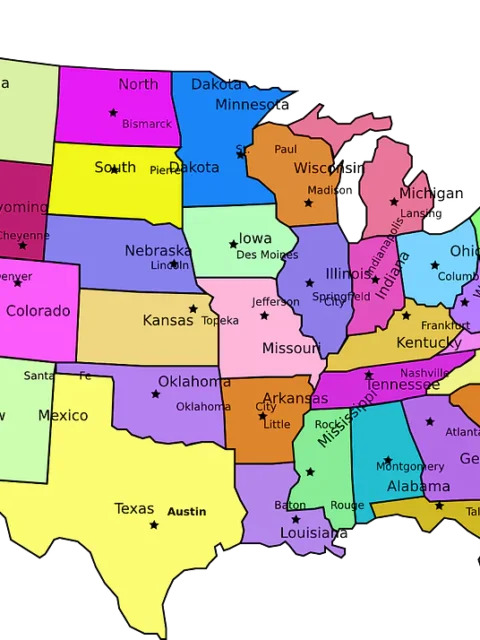Best Hikes in Europe That Will Leave You Breathless
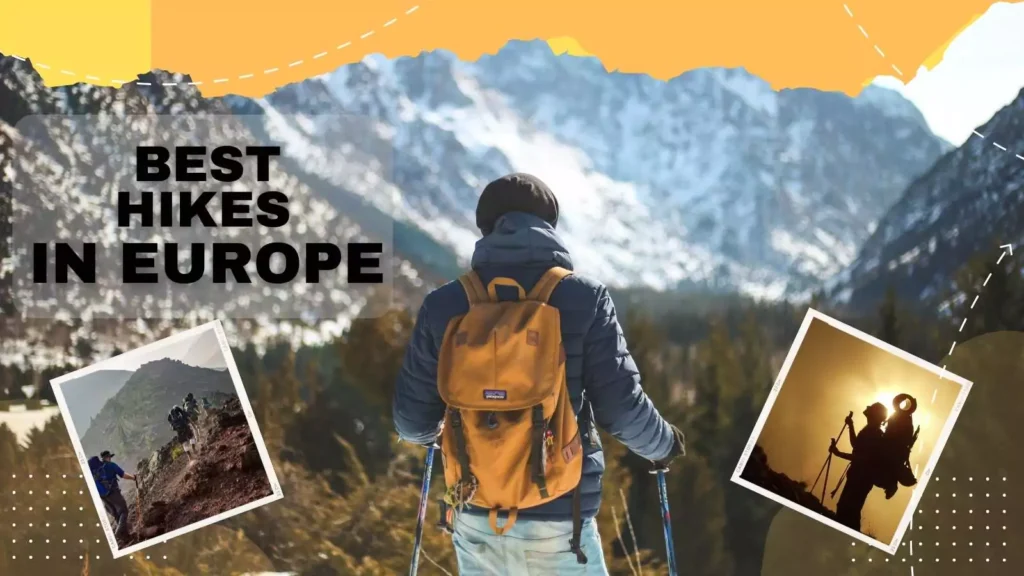
The sharp scent of pine, cold air stinging my face—right then, I knew. I was hooked. Europe ain’t just a landmass; it’s a hiker’s dream. From sunlit cliffs to mountains that scrape the sky, picking a trail felt impossible. Until I got it—”best” ain’t about photos. It’s deeper.
Drowning in info at first. I found too many choices. Too many books. Felt like I was wandering without moving. Then I stopped. Asked myself: What do I want? What sights make my heart race? The list started forming.
For me, top trails ain’t just sweat and steep climbs. It’s the silence, a wild animal appearing out of nowhere, that eerie feeling like nature knows you’re there. It’s about straying from the crowds, finding the secret places.
From the Dolomites’ sky-high spires to Scotland’s brooding cliffs, these six trails are the real deal. So, boots on. Let’s go.
Top European Treks That’ll Make Every Mile Worth It
1. Alta Via 1, Dolomites, Italy
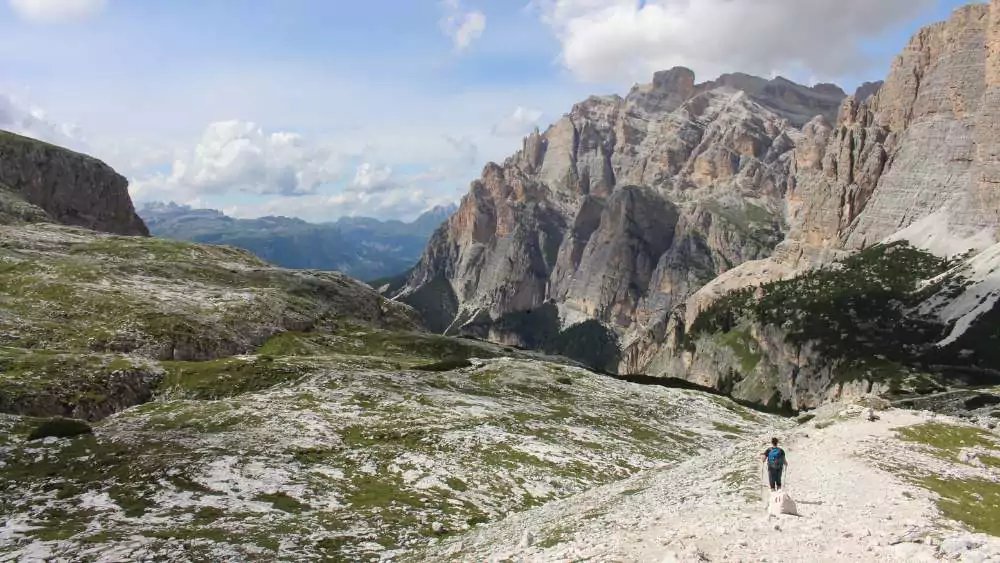
- Difficulty Level: Moderate
- Time it Takes: 7-14 days
- Landscape: Rocky and steep, with the occasional ladder or cable to add some spice.
- Elevation Variation: 7,700m (25,260 ft).
- Ideal for: Hardcore backpackers ready for a real adventure.
- Beginning Point: Lago di Braies (a lake so pretty it looks fake).
- Best Season to Visit: Late spring (May/June) or autumn for cooler weather.
The Alta Via 1 was where I first felt the soul of the Dolomites, which is among the most beautiful places when traveling to Italy. One day, we reached Rifugio Nuvolau as the sun shone bright. But as the evening unfolded, clouds rolled in, creeping up the jagged 3,000-meter peaks. They swirled and twisted, painted orange and pink by the setting sun. I stared, stunned, like I was inside a painting. Later, we sat down for dinner at the hut, and I asked the manager if the sky always performed like this. He just grinned, nodding. “Every night,” he said.
The Dolomites, named after some old French mineralogist, pull clouds from the Adriatic to decorate their surreal rock spires. One of the highlights along this north-south route is Cinque Torri—a cluster of sharp crags. Most hikers begin at Lago di Braies, taking about 10 days to cover the 74 miles to La Pissa. Could you go faster? Sure. But the terrain is no joke. You’ll climb some steep sections, maybe tackle a via ferrata or two (steel cables bolted to the rock), which is a blast—but only if you’ve got the right solo travel essentials.
Camping’s not allowed here, but the mountain huts are worth it. Nuvolau is cozy and remote, but Rifugio Lagazuoi (another stop) sits above old WWI tunnels you can explore. Even though it’s busier and accessible by cable car, the views make up for it. If you want peace and quiet, you’ll find it once you leave the tourist hotspots behind.
2. Tour du Mont Blanc, France

- Difficulty Level: Tough.
- Time it Takes: 6-12 days.
- Landscape: Everything—flat trails, steep rocks, streams, narrow mountain passes.
- Elevation Variation: 10,600m (35,000 ft).
- Ideal For: Fit hikers ticking off a bucket-list trek.
- Beginning Point: Usually Chamonix Valley.
- Best Season to Visit: Summer—late June through early September.
Mont Blanc isn’t just high—it’s massive. Towering at 15,766 feet, it’s Western Europe’s tallest mountain. Walking the 103-mile loop around it lets you see it from every angle. It took me nearly two weeks, but the route’s broken into 11 segments, making it more manageable. Public transport and cable cars let you skip certain stretches if needed. This is one of the most iconic hikes in the European Mountains, and it’s a must for anyone who loves alpine adventures. Other mountain ranges, like the Pyrenees, offer equally dramatic routes with fewer crowds, especially on trails that remain under the radar.
One of the best Europe travel tips I can give is to book huts early—they’re super popular, so plan ahead unless you’re okay with last-minute digs or going slightly off-route. Or better yet, join a guided tour—it’s pricier, but you get hiking buddies and logistics sorted out.
3. Camiño de Mar, Spain
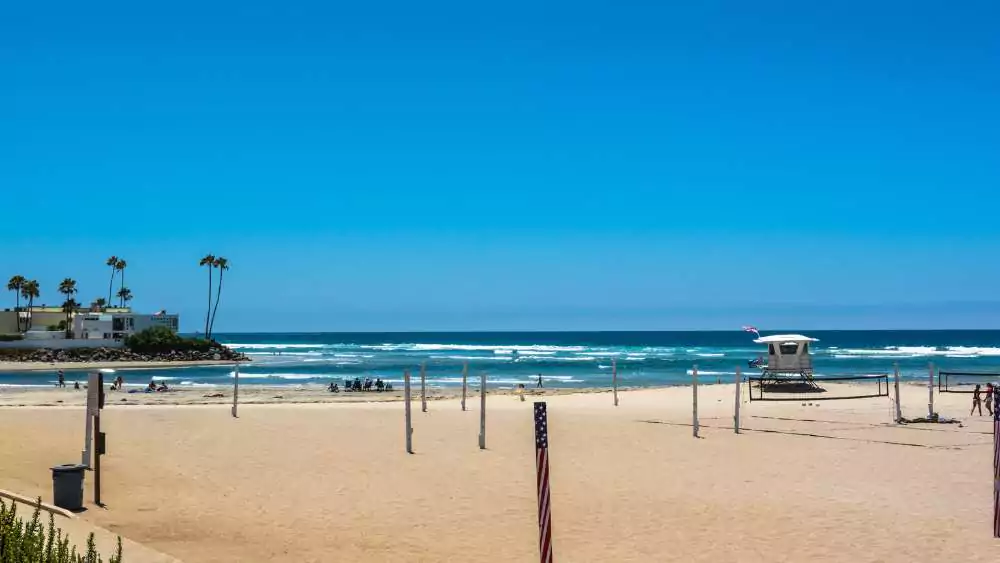
- Difficulty Level: Moderate.
- Time it Takes: Camino Francés takes 30-35 days, but this coastal stretch is shorter.
- Landscape: Woodland trails, paved roads, hills, and mountains.
- Elevation Variation: 20,000m (65,616 ft).
- Ideal for: History buffs, architecture lovers, or spiritual seekers.
- Beginning Point: Saint-Jean-Pied-de-Port in France (for the full Camino Francés).
- Best Season to Visit: April to June, or September-October.
The Camino del Mar is almost nobody’s heard of it. This trail is one of the can’t-miss hikes in Spain for those seeking solitude and untouched beauty, offering a coastal path that feels like a secret only you’ve discovered. In Galician, it’s called the Camiño do Mar—sometimes just Ruta do Mar. Even Gronze doesn’t list it. That’s how unknown it is. That’s exactly why I went.
Unlike the usual routes, this one’s empty. No crowds. No conversations with fellow pilgrims. Didn’t meet a single soul walking it. Once, from a train window, I spotted what might have been pilgrims. Maybe. Even day hikers are rare.
It’s quiet. Almost eerily so. No pilgrim albergues. No luggage transport. Some stretches have no food, no water, nothing.
If you crave Camino camaraderie, forget it. If Norte felt lonely, this will feel like another planet. Then again, maybe that’s what you want.
But the beauty is Unreal. Galicia, raw and real, no tourist fluff.
For solitude seekers and adventure lovers—it’s perfect. I’d do it again in a heartbeat.
4. Fairy Pools, Isle of Skye, Scotland
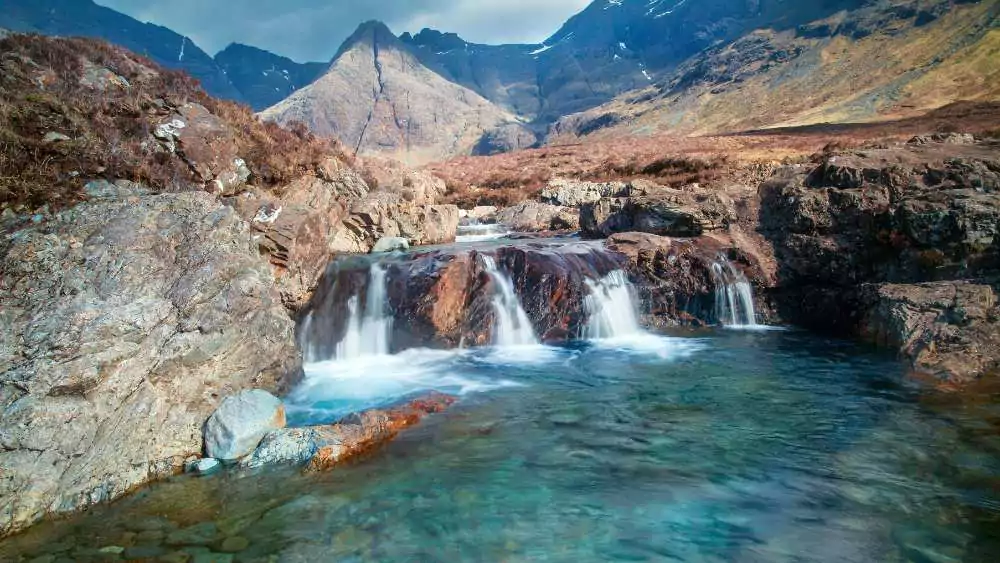
- Difficulty Level: Easy
- Time it Takes: 2 hours (approx.)
- Landscape: Waterfalls cascading into turquoise pools, rocky cliffs, and vibrant natural scenery.
- Elevation Variation: 70 m (total elevation gain: 158 m)
- Ideal for: Casual hikers, nature lovers, photographers, and families.
- Beginning Point: Fairy Pool Parking lot
- Best Season to Visit: Summer (June–September) for milder weather and clearer skies.
Scotland has more than just Loch Ness. The Fairy Pools on Skye is a short hike, but every step feels magical. Waterfalls cascade down rocky cliffs into turquoise pools that seem almost too vibrant to be real. It’s not a hike that’ll leave you out of breath, which means more time to enjoy the surroundings.
Still, new hikers must check out our travel tips for beginners. Brave enough to jump in? The water’s freezing, so pack a wetsuit if you’re planning to swim.
For those exploring the Albanian Alps or other rugged terrains, this is a great warm-up hike to get your legs ready.
5. Tatranská Magistrala, Slovakia
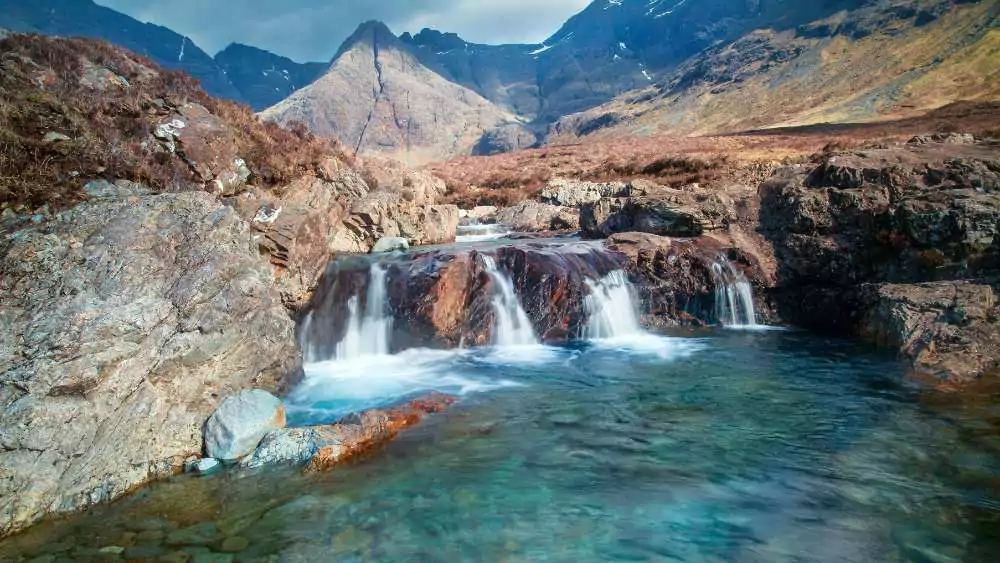
Difficulty Level: Moderate to Challenging
Time it Takes: 2-4 days
Landscape: Dense forests, Rocky ridges and scree slopes, Crystal-clear mountain lakes, jagged peaks like Gerlachovský štít
Elevation Variation: Ascent and descent of around 2,500 meters (8,200 feet).
Ideal for: Experienced hikers, nature lovers and photographers,
Beginning Point: Podbanské (near Štrbské Pleso) and ends at Vel’ké Biely Pleso.
Best Season to Visit: During summer (July to September) or early autumn (September).
The Tatranská Magistrala runs through Slovakia’s High Tatras, Eastern Europe’s alpine jewel. The trail offers breathtaking scenery: forested paths, scree-filled ridges, and crystal-clear lakes. You’ll pass peaks that graze the sky, like Sedlo pod Svišt’ovkou and Vel’ka Svit’ovka—both over 2,000 meters high. Some sections can be slippery, but there are chains to grab onto when the going gets tricky. Mountain huts along the trail offer warm beds and hearty meals.
I admit it is one of the hidden gems in Europe.
Find more details: Hidden Gems in Paris
6. Coast to Coast, England
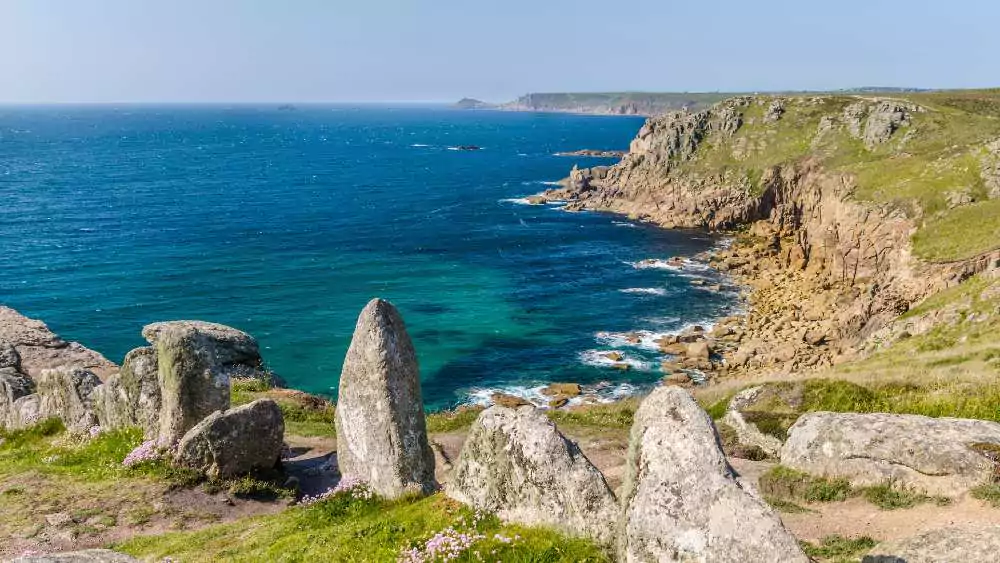
- Difficulty Level: Moderate to Challenging
- Time it Takes: 12–14 days (on average)
- Landscape: Rolling hills, dramatic fells, serene lakes, green valleys, limestone cliffs, and quaint villages
- Elevation Variation: Ascent of 6,995 meters approx.
- Ideal for: Experienced hikers, those who enjoy long distance walking
- Beginning Point: St Bees in Cumbria
- Best Season to Visit: April to October
Alfred Wainwright first mentioned it in a 1973 guidebook—sketches, maps, the works. Coast to Coast, it’s called. From St Bees Head, all the way across northern England to Robin Hood’s Bay, it is a long haul.
Not an official trail, not one single path either. Just a mix of tracks, lanes, and the occasional signpost. 188 miles, three national parks—Lake District, Yorkshire Dales, North York Moors. Some of the best landscapes in England, no question.
Unofficial, yet wildly popular. Back in 2004, people even voted it the world’s second-best walk, right behind Milford Track in New Zealand. That says something about the sheer beauty and challenge found among the world’s most breathtaking hiking routes and why they captivate adventurers everywhere.
I almost did it once, one-way, but then thought—why not retrace my steps instead? Seemed better than dealing with public transport. After all those lockdowns, I wanted to be outside as much as possible.
Most break it into 13 stages, west to east. But there’s no set way. Some take weekends, others knock off a section at a time. However you do it, it’s a walk worth taking.
Best Treks in Europe – FAQs
1. When’s the Sweet Spot for Hiking in Europe?
Honestly, there’s no one-size-fits-all answer. It’s all about where you’re going and how high you plan to go.
- Alps, Pyrenees & Other High Peaks: Summer (June–September) is prime time. Trails are open, mountain huts welcome hikers, and the weather is usually solid. But July and August? Expect crowds.
- Scotland, Scandinavia & the North: Summer wins again—long days, (sometimes) less rain. Still, don’t trust the forecast too much. Weather here changes fast.
- Spain, Greece, Portugal: Summer is too hot. Spring (April–June) or autumn (September–October) hits the sweet spot. Fewer people, better temps, and wow—the colors! Spring wildflowers, autumn leaves… unreal.
- Winter Hiking? Maybe. Snow shuts down most high-altitude trails (December–March). Gear up if you’re heading out—crampons, snowshoes, the works. But in lower places? Spain’s southern coast or the Canary Islands, it is mild and lovely.
2. What About the Wildlife? Any Close Encounters?
Europe’s got critters. You just need sharp eyes. I’ve been lucky enough to see:
- Arctic foxes in Iceland. Curious little guys, not shy at all.
- Ibex & chamois in the Alps. Look up. They love the high slopes.
- Dolphins & whales off Madeira. Magic.
- Firecrests, eagles—so many birds. Birdwatchers bring your binoculars.
- Brown bears in the Carpathians. Rare, but they’re out there. Know bear safety. Hike in groups.
3. Where Should I Rest My Weary Head?
- Camping? Great if legal. Some places ban wild camping, so check first.
- Mountain Huts? My go-to. Basic beds, warm meals, cool people. Book early in peak season!
4. Hiking Makes You Hungry. What’s to Eat?
Hiking food in Europe is incredible. Hearty, regional, and perfect for refueling:
- Fondue in Switzerland – Nothing better after a tough hike.
- Greek mezze – Endless small plates, all delicious.
- Spanish tapas – Shareable, tasty, and perfect for post-hike chill.
- Alpine comfort food – Spaetzle, tartiflette… fuel for mountain climbs.








